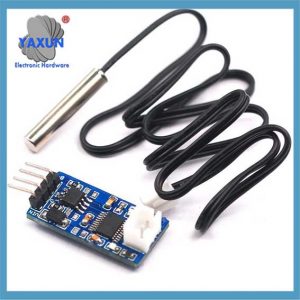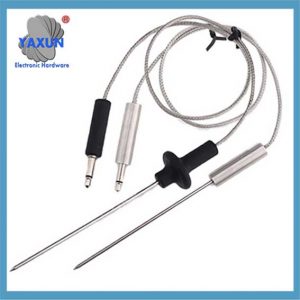The accuracy and response time of NTC and PTC thermistor sensors are two very critical performance indicators. Let me tell you in detail how they are controlled!
Accuracy control
To improve the accuracy of thermistors, we can start from the following aspects:
Choose the right model: The accuracy of different types of thermistors will also vary. Derfor, when choosing, we have to select those with smaller temperature coefficients and higher accuracy according to specific application requirements.
Optimize circuit design: When designing the circuit, the linearity and stability of the thermistor must be fully considered. Through reasonable circuit configuration, such as using two-wire, three-wire or four-wire methods, we can reduce measurement errors and thus improve accuracy.
Use high-precision ADC: The accuracy of the analog-to-digital converter (ADC) also has a great impact on the overall measurement accuracy. Choosing an ADC with high resolution and low noise can further improve the accuracy of temperature measurement.
Signal conditioning: Through precise signal conditioning, such as amplification, filtering, and linearization, we can reduce noise and nonlinear errors, so that the measured results are more stable and accurate.
Temperature compensation: In order to reduce the impact of ambient temperature changes on the measurement results, we can also add a temperature compensation mechanism to the design.
Continuous monitoring and calibration: Don’t forget that the performance of thermistors will change over time. Derfor, we must regularly monitor their performance and perform necessary calibrations to ensure long-term stability.
Response time control
As for response time, it is an important indicator to measure how quickly the thermistor responds to temperature changes. To improve the response time, we can try these methods:
Choose the right model: As mentioned earlier, different models of thermistors have different response times. Choosing models with shorter response times will naturally increase the response speed of the system.
Optimize circuit design: In circuit design, we can take some measures to reduce the time constant of the circuit, such as using low-noise circuit components. På denne måten, the response time of the thermistor can be improved.
Improve the temperature control algorithm: For systems that need to respond quickly to temperature changes, we can also optimize the temperature control algorithm. For eksempel, by using the proportional-integral-derivative (PID) control algorithm, we can adjust the temperature of the system more quickly by adjusting the parameters of the controller.
Reasonable arrangement of temperature sensors: The location and arrangement of temperature sensors will also affect the response time. If the contact area between the sensor and the object being measured is large, the heat exchange will be faster and the response time will naturally be shorter. Imidlertid, please note that too large a contact area may also lead to increased measurement errors, so we have to make a trade-off based on the actual situation.
 English
English Afrikaans
Afrikaans العربية
العربية বাংলা
বাংলা bosanski jezik
bosanski jezik Български
Български Català
Català 粤语
粤语 中文(简体)
中文(简体) 中文(漢字)
中文(漢字) Hrvatski
Hrvatski Čeština
Čeština Nederlands
Nederlands Eesti keel
Eesti keel Suomi
Suomi Français
Français Deutsch
Deutsch Ελληνικά
Ελληνικά हिन्दी; हिंदी
हिन्दी; हिंदी Magyar
Magyar Bahasa Indonesia
Bahasa Indonesia Italiano
Italiano 日本語
日本語 한국어
한국어 Latviešu valoda
Latviešu valoda Lietuvių kalba
Lietuvių kalba македонски јазик
македонски јазик Bahasa Melayu
Bahasa Melayu Norsk
Norsk پارسی
پارسی Polski
Polski Português
Português Română
Română Русский
Русский Cрпски језик
Cрпски језик Slovenčina
Slovenčina Slovenščina
Slovenščina Español
Español Svenska
Svenska ภาษาไทย
ภาษาไทย Türkçe
Türkçe Українська
Українська اردو
اردو Tiếng Việt
Tiếng Việt



